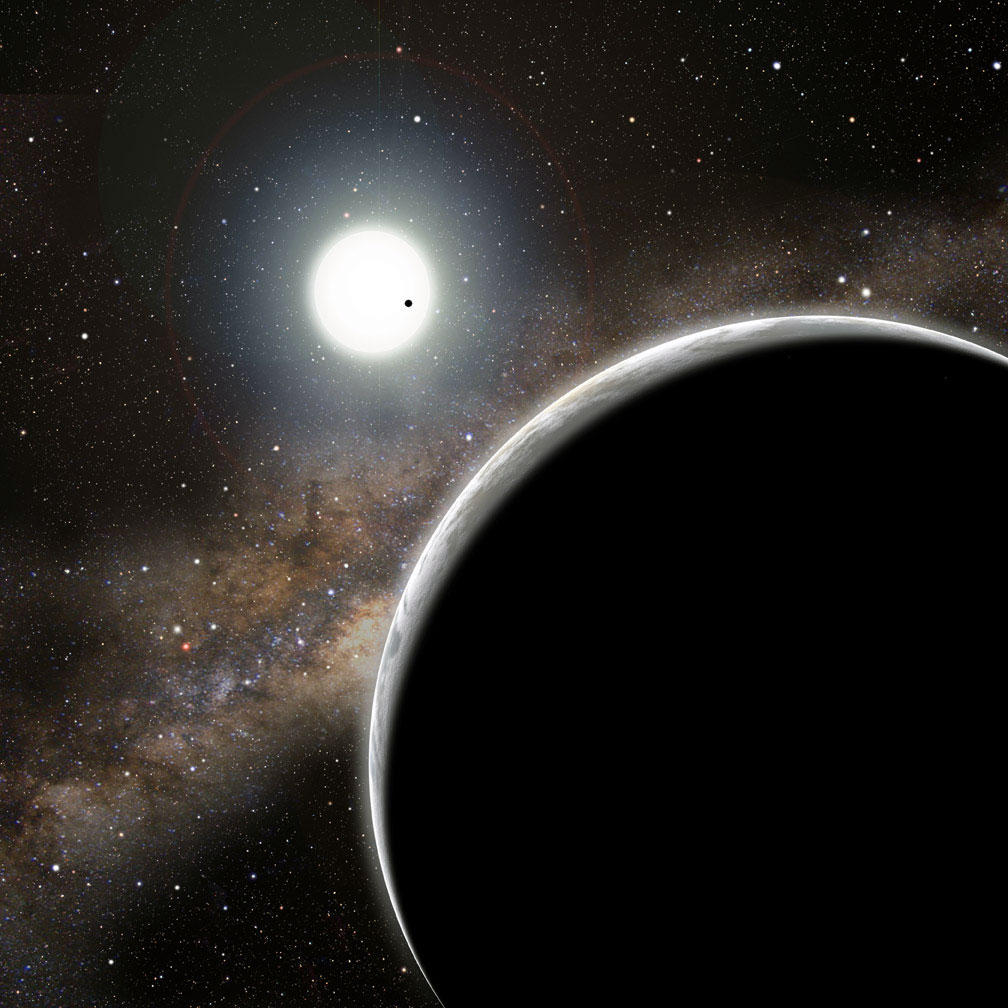|
|

NASA Kepler Mission To Make Announcement About Earth-Like Planets
By MARK DUNPHY
NASA has confirmed that it will host a news briefing on Thursday to announce a new discovery by the Kepler telescope mission. The event will feature contributions from the SETI (Search for extraterrestrial intelligence) Institute and bizarrely from Industrial Light & Magic (ILM), a division of Lucas film Ltd.
Earlier this year, the Kepler mission discovered its first Earth-size planet candidates and its first candidates in the habitable zone, a region where liquid water could exist on a planet’s surface.
Five are both near Earth-size and orbit in the habitable zone of their stars. The discoveries were part of several hundred new planet candidates identified in new Kepler mission science data, released on February 1.
“Wonder what else has been keeping us busy lately? Tune-in Thurs, Sept 15 at 11 a.m. PDT to find out!” was the message tweeted by NASA’s Kepler Mission on Tuesday.
A representative from Industrial Light & Magic (ILM), a division of Lucas film Ltd., will join a panel of scientists to discuss the discovery. The briefing participants are:
–Charlie Sobeck, Kepler deputy project manager, Ames Research Center
–Nick Gautier, Kepler project scientist, NASA’s Jet Propulsion Laboratory, Pasadena, California.
–Laurance Doyle, lead author, SETI Institute, Mountain View, California.
–John Knoll, visual effects supervisor, ILM, San Francisco.
–Greg Laughlin, professor for Astrophysics and Planetary Science, University of California, Santa Cruz, Calif.
The press conference, which will be carried live (11 a.m. PDT, Thursday) on NASA Television and the agency’s website, comes just days after astronomers using the world’s most successful planet finding telescope said they had discovered more than fifty new exoplanets orbiting nearby stars, including sixteen super-Earths.
The HARPS spectrograph on the 3.6-metre telescope at ESO’s La Silla Observatory in Chile identifed the planets, believed to be the largest number of such planets ever announced at one time. One of the recently announced newly discovered planets, HD 85512 b, is estimated to be only 3.6 times the mass of the Earth and is located at the edge of the habitable zone — a narrow zone around a star in which water may be present in liquid form if conditions are right.
Kepler Discovers Invisible Planet
Earlier this month, NASA’s Kepler spacecraft spotted a planet that alternately runs late and early in its orbit because a second, “invisible” world is tugging on it. This is the first definite detection of a previously unknown planet using this method. No other technique could have found the unseen companion.
“This invisible planet makes itself known by its influence on the planet we can see,” said astronomer Sarah Ballard of the Harvard-Smithsonian Center for Astrophysics (CfA). Ballard is lead author on the study, which has been accepted for publication in The Astrophysical Journal.
“It’s like having someone play a prank on you by ringing your doorbell and running away. You know someone was there, even if you don’t see them when you get outside,” she added.
